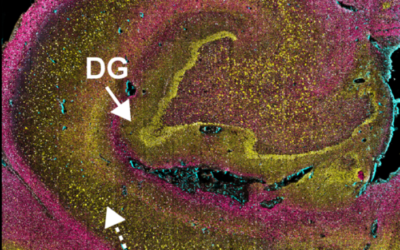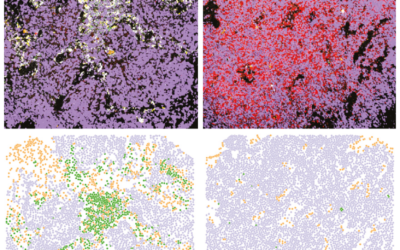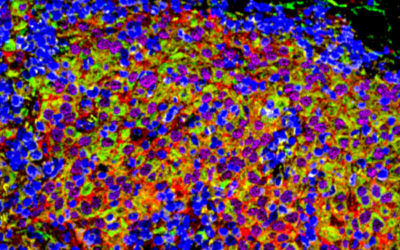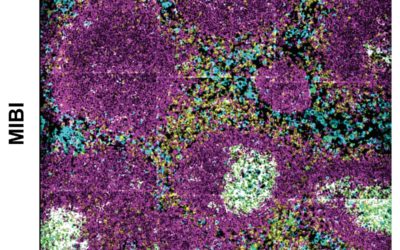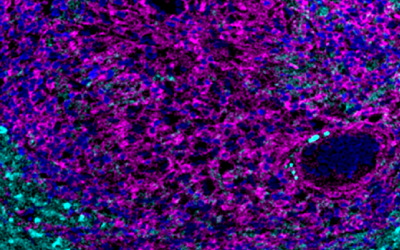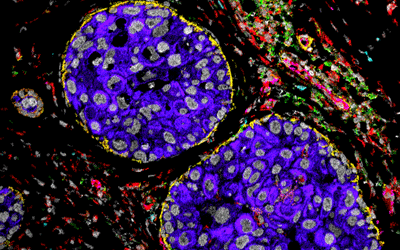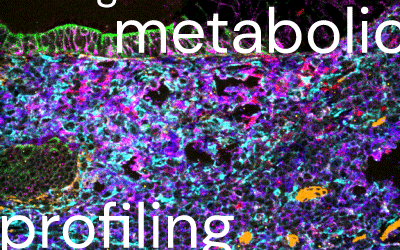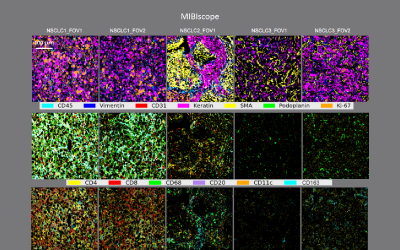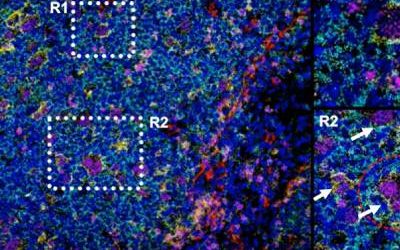
MIBI Blog
MIBI’s Groundbreaking Advances at ASMS 2024 Revolutionizes Complex Biology
MIBI BlogMultiplexed Ion Beam Imaging (MIBI)’s groundbreaking advancements were proudly showcased at the American Society for Mass Spectrometry (ASMS) 2024 in three different posters and an oral presentation. These studies emphasize the power of MIBI in enhancing the...
Choosing the Right Spatial Proteomics Tool: Comparing Immunofluorescence, Imaging Mass Cytometry, and MIBI – A Handy Guide
MIBI BlogThe field of immuno-oncology relies on understanding the interplay between tumor cells and the immune system within the tumor microenvironment (TME). Traditional methods like immunohistochemistry (IHC) and immunofluorescence (IF) have limitations. Here, we...
To Parse Neurological Disorders, Scientists Map Protein Markers with MIBI™ Technology
MIBI BlogA new paper from scientists at Stanford University and The Gladstone Institutes offers a look at how spatial proteomic technology can unravel the mysteries of neurodegenerative disorders such as Alzheimer’s disease. The preprint, recently posted to bioRxiv,...
New Cancer Atlas Illuminates Small Cell Lung Cancer’s Spread with MIBI Technology
MIBI BlogA new molecular map of small cell lung cancer (SCLC) is shedding light on how the aggressive malignancy spreads so quickly and why it’s so difficult to treat. Employing single-cell transcriptome sequencing and multiplexed ion beam imaging (MIBI™)...
SITC 2021: Posters Detail Use of MIBI Technology for Immunotherapy Studies
MIBI BlogEvery year, the Ionpath team looks forward to one of the leading conferences for immuno-oncology research: the annual meeting of the Society for Immunotherapy of Cancer, better known as SITC. For this year’s event, we were honored to present a poster, and to...
Scientists Deploy MIBI Technology for Spatial Analysis of HIV Infection Model
MIBI BlogNew approach provides spatial multi-omic analysis of an HIV modelIn a new preprint posted to bioRxiv, scientists at Stanford University, Oregon Health & Science University, and the Dana-Farber Cancer Institute report findings from the multi-omic analysis...
Stanford Scientists Investigate TB Immune Response with Spatial Proteomics Technology
MIBI BlogResearch team aimed to identify and map immune players in tuberculosis granulomasResearchers have long known that the immune response to the Mycobacterium tuberculosis pathogen leads to the formation of granulomas, or clusters of immune cells designed to...
Spatial Proteomics Sheds Light on Breast Cancer Progression, Gives Hope for Prognostic Test
MIBI BlogTo understand signs of progression to invasive breast cancerIt’s a decades-old mystery among oncologists: why do some women diagnosed with non-invasive breast tumors progress to invasive breast cancer while others do not? Understanding this — and being able...
Stanford Scientists Use MIBI Technology to Study Single-Cell Metabolic Profiles in Colorectal Carcinoma
MIBI BlogSingle-cell, metabolic regulome profilingScientists at Stanford University, Vrije University Amsterdam, and the California Institute of Technology reported this year on compelling new work to characterize cellular metabolic profiles at the single-cell level....
How MIBI Technology Reveals Key Elements of the Tumor Microenvironment |SITC 2020 Poster
MIBI BlogHighlights from the poster The IONpath team was honored to have a poster selected for presentation at this year’s annual meeting of the Society for Immunotherapy of Cancer, better known as SITC. We were delighted to showcase some of the immune profiling work...
For Breast Cancer Patients, Spatial Biology Drives New Discoveries
MIBI BlogWhile there are so many days and months dedicated to cancer, there will always be something special about Breast Cancer Awareness Month. Designating October as a month-long celebration of survivors, caregivers, clinicians, and scientists — as well as a way to...
Webinar: Why Spatial Proteomics Matters for Understanding the Tumor Microenvironment
MIBI BlogA Dana-Farber Case Study -- Hodgkin LymphomaWhen it comes to spatial biology, showing is better than telling. That’s why we’re excited about the recent webinar on GenomeWeb featuring pathologists Scott Rodig and Kyle Wright from the Dana-Farber Cancer...


